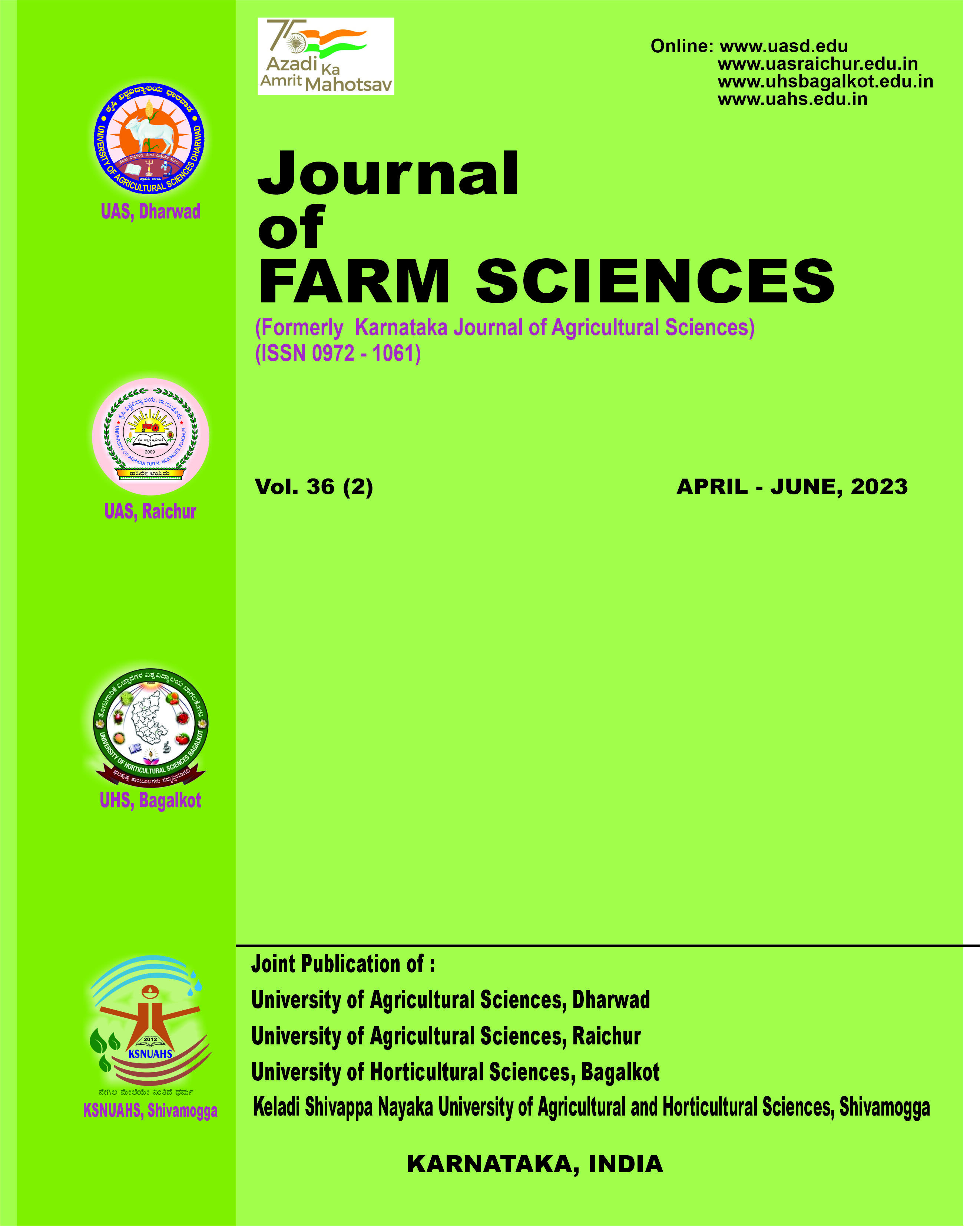Genetic diversity studies in blackgram (Vigna mungo L. Hepper) germplasm
Keywords:
Blackgram, Cluster analysis, D2 analysis, Genetic diversity
Abstract
In the present study, 75 genotypes of blackgram comprises advance breeding lines, selections from local landraces and released cultivars were evaluated for different traits during kharif 2017 at the IIPR Regional Research Centre, UASDharwad to assess the genetic diversity among the genotypes using Mahalanobis D2 statistics. The analysis of variancerevealed highly significant differences among the genotypes of blackgram for the traits studied. The genotypes weregrouped into twelve clusters. The cluster I with 48 genotypes was the largest cluster followed by cluster II with 9genotypes and cluster VII with 5 genotypes. The intra-cluster distance was maximum (28.48) in cluster X followed bycluster II (13.68). The maximum inter-cluster distance was observed between cluster VI and VIII. The traits like 100 seedweight, clusters per plant, pods per plant and seed yield per plant contributed maximum towards diversity, while, traits likepod length, number of branches per plant and plant height contributed minimum to the genetic divergence. The presentstudy revealed that genotypes belongs to cluster VI and VIII are most diverse in nature could be utilised in hybridizationprogramme for the genetic improvement of blackgram
Published
2020-09-24
How to Cite
RASHMI, D. R., & REVANAPPA, S. B. (2020). Genetic diversity studies in blackgram (Vigna mungo L. Hepper) germplasm. Journal of Farm Sciences, 33(03), 299-301. https://doi.org/10.61475/jfm.v33i03.223
Section
Research Article
Copyright (c) 2020 Journal of Farm Sciences

This work is licensed under a Creative Commons Attribution-NonCommercial-NoDerivatives 4.0 International License.


